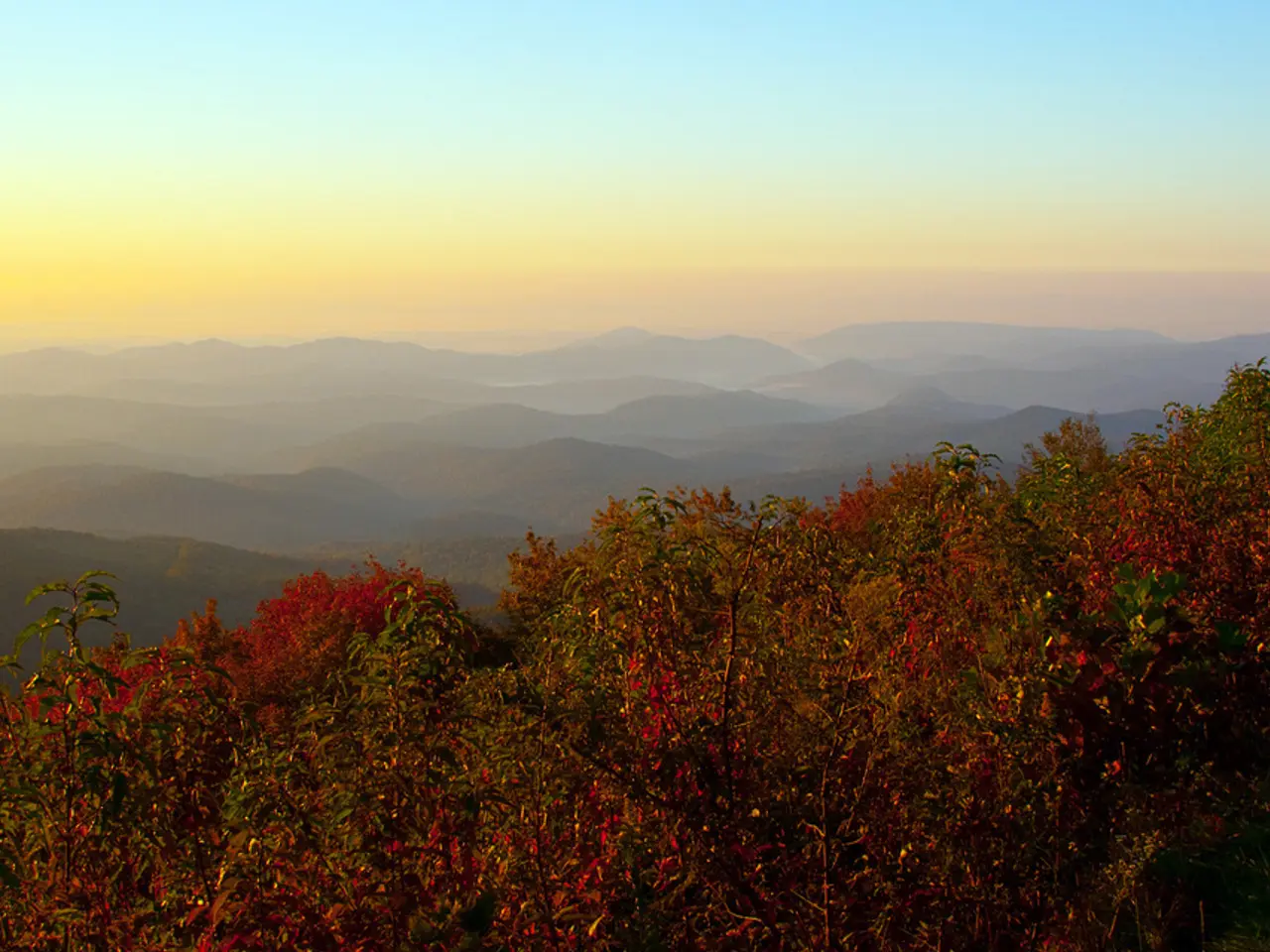Discover the Beauty of Joshua Tree National Park: A Resplendent Desert Sanctuary
In the heart of Southern California, nestled between the Transverse mountain ranges, lies the awe-inspiring Joshua Tree National Park. This desert oasis, a haven for nature lovers and stargazers alike, offers a unique blend of history, geology, and wildlife.
The park's rich history dates back to the Pleistocene era, when the Pinto people thrived near a slow-moving river in the now dry Pinto Basin. Other American Indian groups, including the Cahuilla tribe, travelled through the area, leaving behind rock paintings, pottery ollas, and remnants of their passing.
The desert landscape was transformed in the late 1800s as explorers, cattlemen, miners, and homesteaders arrived in search of gold and free land. Remnants of the Lost Horse Ranch, Desert Queen mines, and the Desert Queen Ranch still stand as a testament to this period.
Joshua Tree National Park was first proclaimed a National Monument on August 10, 1936, by President Franklin D. Roosevelt, and was redesignated a National Park on October 31, 1994. It was also designated a Biosphere Reserve in 1984. As of September 23, 2000, the park covers a total area of 1,017,748.03 acres, with 954,242.68 acres of federal land and 63,505.35 acres of non-federal land.
For modern-day visitors, the park's eastern side is bounded by the low-lying Colorado Desert, while the western side is Mojave desert country, characterised by the iconic Joshua trees. The local Cahuilla tribe refers to the Joshua tree as "hunuvat chiy'a" or "humwichawa".
The nearest airport to Joshua Tree National Park is Palm Springs International Airport (PSP), located about 40 miles (approximately a 1-hour drive) from the park. It offers convenient access for visitors, with multiple airlines operating flights from major U.S. cities and amenities including car rentals to facilitate travel into the park. The nearest international airport is also Palm Springs International Airport, located 25 miles away.
Visitors can reach the park from the north via I-15, I-215, I-10, and Stateroad 62, or from the east via I-40 and Highway 95, then Stateroad 62. From the south, visitors can take I-10 to the south entrance of the park, while from the west, they can take I-10 and Highway 62 (29 Palms Highway) to reach the park, or Stateroad 62 to the north entrances of the park.
The park offers a variety of activities for visitors. The nature trails at Cap Rock and the Oasis of Mara are accessible, and an assistive listening system is available for ranger programs with prior notice. Bicycling is permitted on public roads, but bikes are prohibited on backcountry and nature trails.
Today, many people come to Joshua Tree National Park for its clear skies, clean air, peace, tranquility, quietude, and beauty. Whether you're a history buff, a nature enthusiast, or a stargazer, Joshua Tree National Park promises an unforgettable experience.
- The awe-inspiring Joshua Tree National Park, located in Southern California, offers a unique blend of history, geology, and wildlife.
- The park's rich history dates back to the Pleistocene era, when the Pinto people thrived near a slow-moving river in the now dry Pinto Basin.
- Other American Indian groups, including the Cahuilla tribe, traveled through the area, leaving behind rock paintings, pottery ollas, and remnants of their passing.
- The desert landscape was transformed in the late 1800s as explorers, cattlemen, miners, and homesteaders arrived in search of gold and free land.
- Remnants of the Lost Horse Ranch, Desert Queen mines, and the Desert Queen Ranch still stand as a testament to this period.
- The park was first proclaimed a National Monument on August 10, 1936, by President Franklin D. Roosevelt, and was redesignated a National Park on October 31, 1994.
- It was also designated a Biosphere Reserve in 1984, and as of September 23, 2000, the park covers a total area of 1,017,748.03 acres.
- The park's eastern side is bounded by the low-lying Colorado Desert, while the western side is Mojave desert country, characterized by the iconic Joshua trees.
- The local Cahuilla tribe refers to the Joshua tree as "hunuvat chiy'a" or "humwichawa".
- The nearest airport to Joshua Tree National Park is Palm Springs International Airport (PSP), located about 40 miles from the park, providing convenient access for visitors.
- Visitors can reach the park from the north via I-15, I-215, I-10, and Stateroad 62, or from the east via I-40 and Highway 95, then Stateroad 62.
- From the south, visitors can take I-10 to the south entrance of the park, while from the west, they can take I-10 and Highway 62 (29 Palms Highway) to reach the park, or Stateroad 62 to the north entrances of the park.
- The park offers a variety of activities for visitors, including exploring nature trails at Cap Rock and the Oasis of Mara, which are accessible, and ranger programs with an assistive listening system available with prior notice.
- Bicycling is permitted on public roads, but bikes are prohibited on backcountry and nature trails.
- Today, many people come to Joshua Tree National Park for its clear skies, clean air, peace, tranquility, quietude, and beauty.
- Whether you're a history buff, a nature enthusiast, or a stargazer, Joshua Tree National Park promises an unforgettable experience.
- The park is a haven for those embracing a sustainable lifestyle and outdoor-living, offering a chance to connect with nature, wildlife, and the earth's geology.




